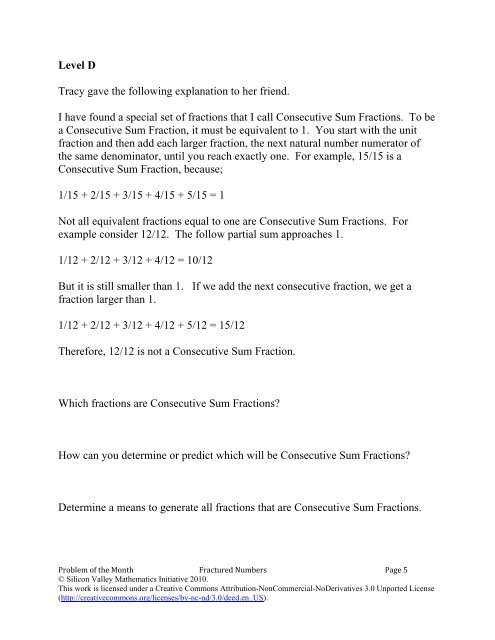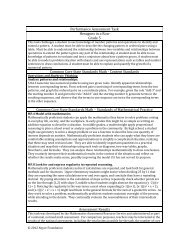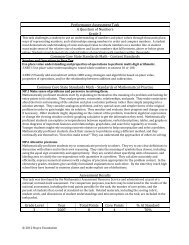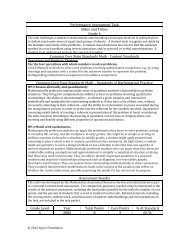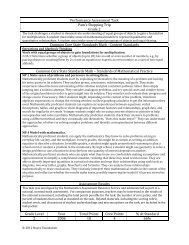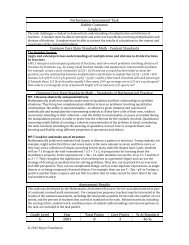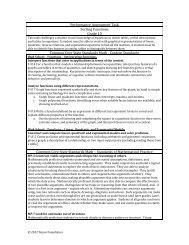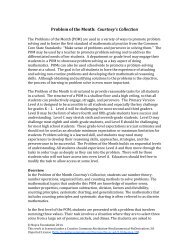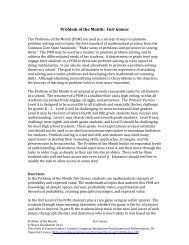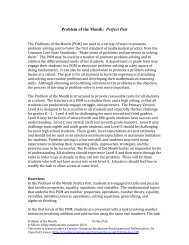subdividing
Problem of the Month: Fractured Numbers - Inside Mathematics
Problem of the Month: Fractured Numbers - Inside Mathematics
- No tags were found...
You also want an ePaper? Increase the reach of your titles
YUMPU automatically turns print PDFs into web optimized ePapers that Google loves.
Level D<br />
Tracy gave the following explanation to her friend.<br />
I have found a special set of fractions that I call Consecutive Sum Fractions. To be<br />
a Consecutive Sum Fraction, it must be equivalent to 1. You start with the unit<br />
fraction and then add each larger fraction, the next natural number numerator of<br />
the same denominator, until you reach exactly one. For example, 15/15 is a<br />
Consecutive Sum Fraction, because;<br />
1/15 + 2/15 + 3/15 + 4/15 + 5/15 = 1<br />
Not all equivalent fractions equal to one are Consecutive Sum Fractions. For<br />
example consider 12/12. The follow partial sum approaches 1.<br />
1/12 + 2/12 + 3/12 + 4/12 = 10/12<br />
But it is still smaller than 1. If we add the next consecutive fraction, we get a<br />
fraction larger than 1.<br />
1/12 + 2/12 + 3/12 + 4/12 + 5/12 = 15/12<br />
Therefore, 12/12 is not a Consecutive Sum Fraction.<br />
Which fractions are Consecutive Sum Fractions?<br />
How can you determine or predict which will be Consecutive Sum Fractions?<br />
Determine a means to generate all fractions that are Consecutive Sum Fractions.<br />
Problem of the Month Fractured Numbers Page 5<br />
© Silicon Valley Mathematics Initiative 2010.<br />
This work is licensed under a Creative Commons Attribution-NonCommercial-NoDerivatives 3.0 Unported License<br />
(http://creativecommons.org/licenses/by-nc-nd/3.0/deed.en_US).


